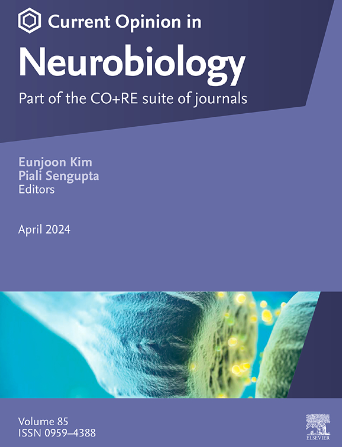A neurobiology perspective on the assembly of retinal vasculature from 2D to 3D
IF 5.2
2区 医学
Q1 NEUROSCIENCES
引用次数: 0
Abstract
The reciprocal regulation of the neural ensemble and vascular network within the mammalian central nervous system (CNS) is crucial for its development and functionality. Neuron-derived pro-angiogenic factors, such as growth factors, morphogens, and guidance cues, play a key role in forming stereotypical vascular architectures in the cortex, spinal cord, and cerebellum during development. Notably, the CNS vasculature forms distinct 3D lattice structures composed of laminar vascular networks interconnected by penetrating vessels. This contrasts with the more random 3D arborizations found in tumors. While the morphogen gradients for vascular network growth have been well-studied, the mechanisms contributing to vascular patterning and lattice maintenance in 3D are not fully understood. The mammalian retina provides an ideal model for studying these mechanisms, given its laminar organization of neurons and plexus organization of vessels, allowing for the investigation of 2D growth to 3D lattice establishment in a stepwise manner. Notably, recent studies have highlighted the roles of neurons and glia in retinal vascular patterning in 2D, as well as the involvement of neurotransmitters in regulating vascular growth. Additionally, direct neuron-to-vessel interactions have been found to contribute to 3D retinal vascular lattice formation. As emerging technologies provide new insights into retinal vascular assembly in 3D, understanding the developmental regulation and the physiological and pathophysiological effects of 3D lattice disruption remains a fertile field of research.
从2D到3D视网膜血管组装的神经生物学观点
哺乳动物中枢神经系统(CNS)的神经系统整体和血管网络的相互调节对中枢神经系统的发育和功能至关重要。神经元来源的促血管生成因子,如生长因子、形态因子和引导因子,在发育过程中在皮层、脊髓和小脑形成典型血管结构中起关键作用。值得注意的是,中枢神经系统血管形成独特的三维晶格结构,由穿透血管相互连接的层流血管网络组成。这与在肿瘤中发现的更随机的3D结节形成对比。虽然血管网络生长的形态梯度已经得到了很好的研究,但对三维血管模式和晶格维持的机制尚未完全了解。哺乳动物视网膜为研究这些机制提供了一个理想的模型,因为它的神经元层状组织和血管丛状组织,允许以逐步的方式研究二维生长到三维晶格的建立。值得注意的是,最近的研究强调了神经元和胶质细胞在2D视网膜血管模式中的作用,以及神经递质在调节血管生长中的作用。此外,已经发现直接神经元与血管的相互作用有助于3D视网膜血管晶格的形成。随着新兴技术为三维视网膜血管组装提供了新的见解,理解三维晶格破坏的发育调节和生理和病理生理效应仍然是一个肥沃的研究领域。
本文章由计算机程序翻译,如有差异,请以英文原文为准。
求助全文
约1分钟内获得全文
求助全文
来源期刊

Current Opinion in Neurobiology
医学-神经科学
CiteScore
11.10
自引率
1.80%
发文量
130
审稿时长
4-8 weeks
期刊介绍:
Current Opinion in Neurobiology publishes short annotated reviews by leading experts on recent developments in the field of neurobiology. These experts write short reviews describing recent discoveries in this field (in the past 2-5 years), as well as highlighting select individual papers of particular significance.
The journal is thus an important resource allowing researchers and educators to quickly gain an overview and rich understanding of complex and current issues in the field of Neurobiology. The journal takes a unique and valuable approach in focusing each special issue around a topic of scientific and/or societal interest, and then bringing together leading international experts studying that topic, embracing diverse methodologies and perspectives.
Journal Content: The journal consists of 6 issues per year, covering 8 recurring topics every other year in the following categories:
-Neurobiology of Disease-
Neurobiology of Behavior-
Cellular Neuroscience-
Systems Neuroscience-
Developmental Neuroscience-
Neurobiology of Learning and Plasticity-
Molecular Neuroscience-
Computational Neuroscience
 求助内容:
求助内容: 应助结果提醒方式:
应助结果提醒方式:


